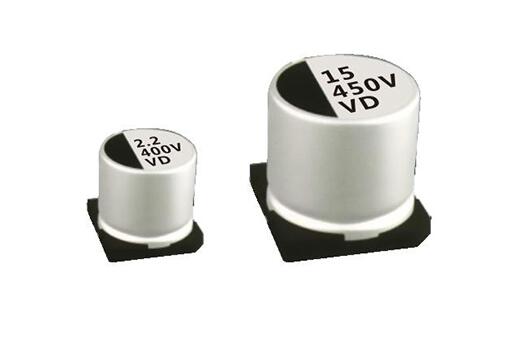Youchen Technology
Chip Capacitor/Electrolytic Capacitor/Ceramic Capacitor SupplierYouchen Technology
Chip Capacitor/Electrolytic Capacitor/Ceramic Capacitor Supplier With the development of science and technology, especially the development of integrated circuits (IC) and Very Large Scale Integration (VLSI), people have paid attention to whether the entire capacitor industry can continue to develop, or even whether it can survive. However, since 1987, the global capacitor production has been growing at a rate of more than 20% every year, making this doubt self defeating. Practice has proved that Electrolytic capacitor has strong vitality and irreplaceable.
SMD Electrolytic capacitorOn the one hand, due to the emergence of ICs, some small capacity capacitors are integrated into the circuit; On the other hand, the development of ICs has greatly increased the working frequency of circuit systems, leading toElectrolytic capacitorCapacitors are replaced by other capacitors in some circuits. However, the power supply part of the IC circuit is always inseparable from the Electrolytic capacitor.
Additionally,Electrolytic capacitorThe improvement of its own performance has also expanded to other application fields of capacitors.

From this, it can be seen that,Aluminum electrolytic capacitorIt has not been impacted by other capacitors and has unique advantages such as large unit volume capacity, large electrostatic capacity, high specific capacity, easy miniaturization, self-healing characteristics, and low price.
In addition, although there is some competition in low voltage and small capacity, the way out is to speed up the research and development of related technologies, strengthen and continue to expand the existing advantages of Electrolytic capacitor, and overcome its own shortcomings. Especially in recent years, Electrolytic capacitor have made great breakthroughs in many aspects and achieved a qualitative leap.
Not only has its market share not shrunk, but on the contrary, its application fields continue to expand, showing rapid growth and ushering in many unprecedented development opportunities. As one of its three major raw materials, Electrolytic capacitor paper has irreplaceable advantages, such as mature products, low manufacturing cost, environmental protection, degradability, good absorption, high temperature resistance, and so on. Because some Electrolytic capacitor paper also has irreplaceable advantages.
1. Low loss
For Electrolytic capacitor, its loss value depends on the inherent dielectric loss of the electrode foil and the Equivalent series resistance of the electrolyte. When the inherent dielectric loss of electrode foil is fixed, the main measure to reduce the loss is to improve the absorption of Electrolytic capacitor paper.
In order to improve the absorbability of low-voltage electrolytic paper, most manufacturers use fibers with lower loss values such as S, M, C, B, E as raw materials of low-voltage electrolytic paper, and reduce the density of low paper on the premise of ensuring tensile strength. At present, the density of NKK's MER0.5, MR5D0.5 and other products has reached 0.35g/cm3.
2. High purity
High leakage current is the performance disadvantage of Electrolytic capacitor. Low voltage Electrolytic capacitor requires high accuracy, so there are special requirements for leakage current. For example, the coupling capacitor in the high gain preamplifier stage requires no leakage current to ensure the quality of high fidelity stereo sound equipment. Therefore, reducing leakage current has become an important topic to meet the requirements in this regard. As the raw material of Electrolytic capacitor, the purity of electrolytic paper is the key factor affecting the leakage current.
3. High strength thinning
With the increasing automation of the production of Electrolytic capacitor, the wrapping speed of the capacitor is constantly improving, and the strength requirements for electrolytic paper are also increasingly high, especially for low-voltage Electrolytic capacitor paper. On the one hand, to meet the requirements of low loss and miniaturization of Electrolytic capacitor, the paper performance is to have good absorption (low density);
On the other hand, in order to meet the requirements of miniaturization of capacitors, electrolytic paper will become thinner, but too low density or too thin thickness will affect the strength of electrolytic paper. Therefore, on the premise of meeting the requirements of low loss and miniaturization of capacitors, improving the strength of low-voltage Electrolytic capacitor paper will be a development direction of low-voltage Electrolytic capacitor paper in the future.

